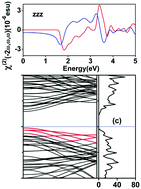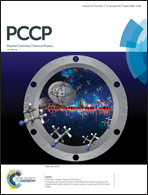Second-order nonlinear optical properties of bulk GeC polytypes, g-GeC and corresponding nanotubes: first-principles calculations
Abstract
Very recently, researchers have found that low-dimensional materials display more intriguing second-order nonlinear optical (NLO) phenomena and possess larger second-order NLO susceptibilities than the corresponding bulk forms. Here, we perform a systematic first-principles study of the second-order NLO properties and linear electro-optical coefficients of GeC bulk polytypes, g-GeC and corresponding nanotubes. Remarkably, the second-order NLO susceptibility χ(2) of g-GeC and corresponding nanotubes can be comparable with that of the archetypical NLO semiconductor GaAs. Therefore, g-GeC and corresponding nanotubes have potential applications in NLO and electro-optical devices. We also quantitatively calculate the second-order NLO response contributions from the high density of states near the VBM via dividing NLO susceptibilities into contributions from different valence bands, revealing that the high density of states is the origin of the strong NLO responses in g-GeC and corresponding nanotubes. Such a mechanism will help to find excellent NLO materials more effectively. Moreover, the prominent features in the spectra of χ(2)(−2ω, ω, ω) of GeC polytypes are analyzed in terms of single- and double-photon resonances.



 Please wait while we load your content...
Please wait while we load your content...